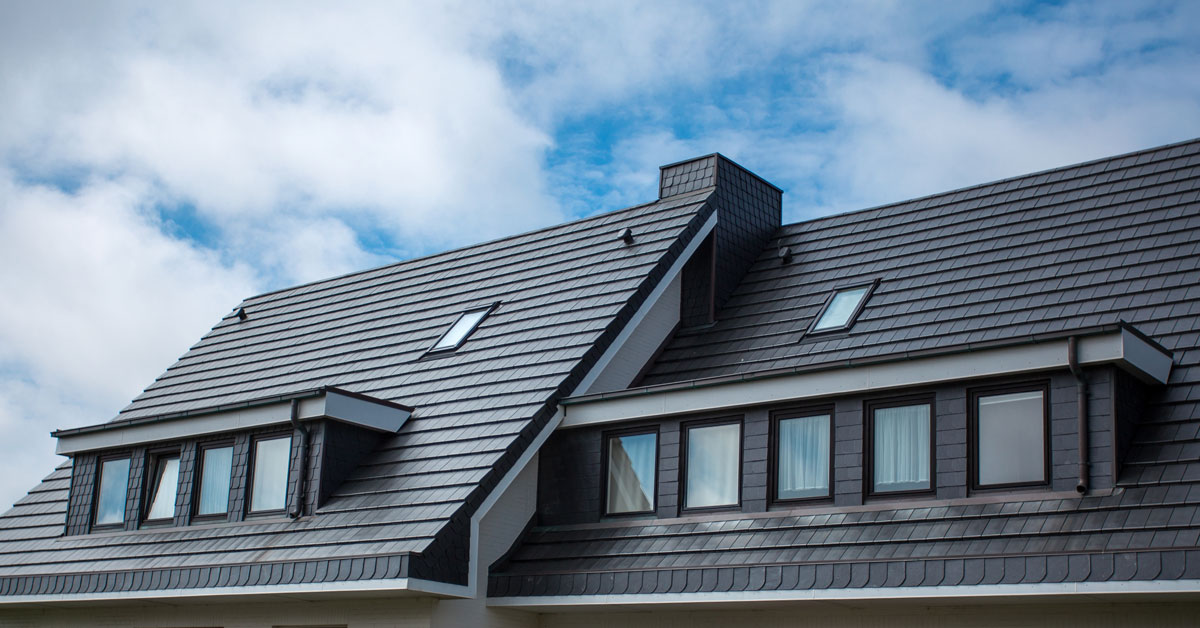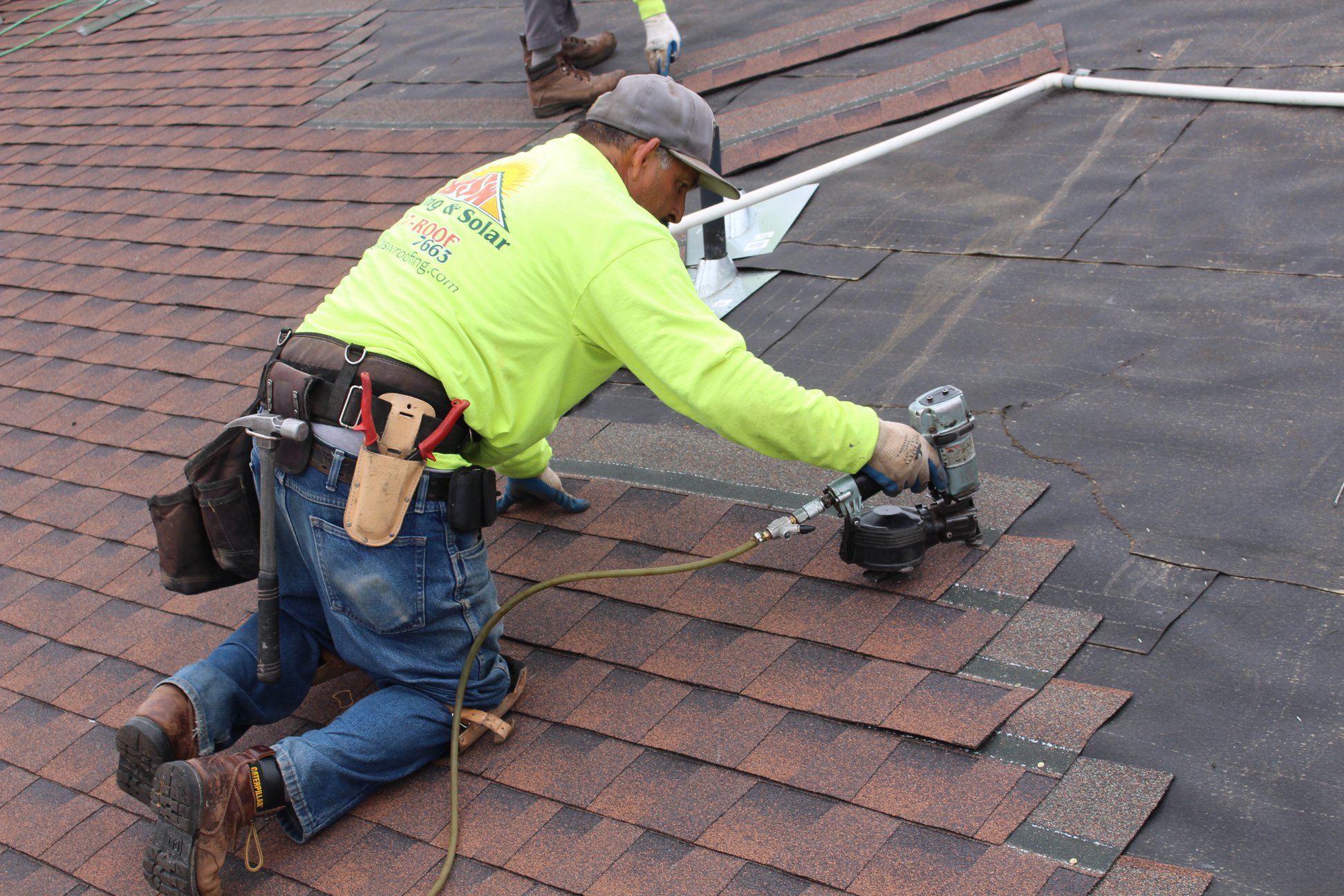A Comprehensive Look at Roofing Companies Gainesville Residents Recommend
A Comprehensive Look at Roofing Companies Gainesville Residents Recommend
Blog Article
Finest Practices for Ensuring Proper Roofing Ventilation
Making sure correct roof air flow is essential for the longevity and effectiveness of a roof. A balanced consumption and exhaust air vent ratio, frequently 1:300, plays a critical role, with intake vents ideally placed at the lower side of the roofing for trendy air entrance and exhaust vents at the height for cozy air exit. Normal evaluations to identify clogs and preserve clear air movement are vital. Maintaining insulation away from vents is essential to stop airflow constraint. Understanding these foundational components establishes the phase for even more detailed insights right into installment and upkeep techniques that can substantially enhance your roofing system's efficiency.
Understand Ventilation Fundamentals
Effectively understanding air flow basics is vital for making sure the long life and performance of roof systems. Effective ventilation alleviates moisture buildup and temperature extremes in the attic, both of which can result in significant structural damage over time. A well-ventilated roof covering aids in stopping common concerns such as mold growth, timber rot, and ice dams, which can endanger the integrity of the roof covering materials and the underlying structures.
The primary objective of air flow is to promote the activity of air, allowing for a consistent exchange in between the outside and indoor environments. This equilibrium is accomplished with a combination of consumption and exhaust vents that function together to preserve ideal airflow. Intake vents, commonly located along the soffits or eaves, enable fresh air to go into the attic room, while exhaust vents, commonly located at or near the roof ridge, make it possible for warm, damp air to get away.
Key factors affecting the efficiency of roofing ventilation consist of proper positioning, appropriate sizing, and making certain that both intake and exhaust vents are unhampered. Routine evaluation and upkeep are vital to determine potential blockages, damages, or ineffectiveness in the ventilation system, therefore securing the roof's performance and toughness.
Types of Roof Vents
Roof covering vents play an important role in preserving reliable attic room ventilation and, by expansion, the total wellness of the roof system. Numerous kinds of roofing vents are available, each with special advantages customized to particular roof covering requirements. Ridge vents, for example, are mounted along the roofing system's height, permitting warm, humid air to leave from the attic room. They offer continual air flow and mix perfectly with the roofline, making them both efficient and cosmetically pleasing.

Soffit vents are mounted under the eaves and job in tandem with roof covering vents to guarantee a balanced intake and exhaust system. By allowing cooler air to go into from below, soffit vents assist in the expulsion of hot air with top vents. Gable vents, located on the outside wall surfaces of the attic room, deal another reliable solution, especially in homes with saddleback roofs.
Assess Your Current Ventilation

Next, take into consideration the age and condition of your roof covering materials and air flow elements. Older systems may not follow current building codes or might have degraded over time, reducing their efficiency. Conduct a detailed exam to identify any kind of indications of damage, such as rust, damage, or voids that might compromise the system's efficiency.
Furthermore, measure the attic room temperature and moisture levels. High temperatures and humidity can indicate insufficient ventilation.
Installment Best Practices
Efficient installation of roofing ventilation systems is critical for making sure ideal performance and longevity. Proper setup begins with comprehending the details air flow demands of the roof covering and the structure it covers. This includes determining the appropriate proportion of intake to exhaust vents, generally sticking to the 1:300 policy, which specifies one square foot of air flow for each 300 square feet of attic room flooring room.

Consumption vents must be installed at the roof's lower side, typically in the soffits, to enable amazing air to get in. Exhaust vents, on the various other hand, should be mounted near or at the roofing's top to assist in the exit of warm, damp air.
Seal all air vent connections thoroughly to avoid air leakages and potential water seepage. Usage high-grade products and follow supplier standards to make sure toughness and performance. In addition, incorporating ridge vents with baffles can significantly enhance airflow effectiveness by avoiding wind-driven rainfall and snow from getting in the attic.
Inevitably, accurate installment of roof air flow systems mitigates possible problems such as mold development, ice dams, and architectural damages, guaranteeing the roof covering's honesty and the building's total health.
Routine Upkeep Tips
Consistency in upkeep practices is essential to making certain the long-term efficiency of roof ventilation systems. Regular examinations are critical, preferably carried out biannually-- in the spring and fall. During these evaluations, guarantee that vents are devoid of debris, nests, and other blockages that can impede airflow. Examine for any signs of moisture accumulation or mold and mildew, as these can indicate improper ventilation or leakages (roofing companies).
Cleaning up the vents is one more important task. Utilize a soft brush or a vacuum cleaner to their website remove dirt and debris from consumption and exhaust vents. Beware not to damage the air vent displays or louvers during the procedure. Furthermore, evaluate the attic room area for any type of indications of water damage, which could endanger the integrity of the roof covering system.
Appropriate insulation is equally essential. Guarantee that attic room insulation does not obstruct the vents, as this can severely restrict airflow. If linked here any insulation has actually changed or worked out, reposition or replace it to keep an efficient obstacle.
Lastly, change any kind of harmed or missing out on parts without delay. Broken vents, cracked roof shingles, or worn-out blinking can all add to insufficient air flow and should be attended to right away. Normal upkeep guarantees that the roofing ventilation system functions efficiently, thereby prolonging the life expectancy of the roof covering itself.
Final Thought
Guaranteeing proper roofing ventilation is critical for maintaining the efficiency and longevity of a roofing system. Adherence to the 1:300 intake and exhaust vent proportion, paired with the strategic placement of vents, is necessary. Regular biannual assessments, particles cleansing, and guaranteeing insulation does not obstruct air movement are crucial methods. Carrying out these best methods will certainly cultivate a well-ventilated roofing system, thereby reducing possible concerns connected to moisture accumulation and too much heat, eventually extending the roof covering's life expectancy.
A well balanced consumption and exhaust air vent proportion, generally 1:300, plays a crucial function, with consumption vents ideally placed at the reduced side of the roofing system for trendy air access and exhaust vents at the peak for cozy air departure. Intake vents, generally located along the soffits or eaves, enable fresh air to get in the attic room space, while exhaust vents, often located at or near the roof covering ridge, make it possible for hot, moist air to leave.
Soffit vents are installed under the eaves and job in tandem with roof covering vents to make certain a balanced intake and exhaust system. By allowing cooler air to get in from below, soffit vents promote the expulsion of warm air via top vents. Adherence to the 1:300 intake and exhaust vent ratio, coupled with the calculated placement of vents, is necessary.
Report this page